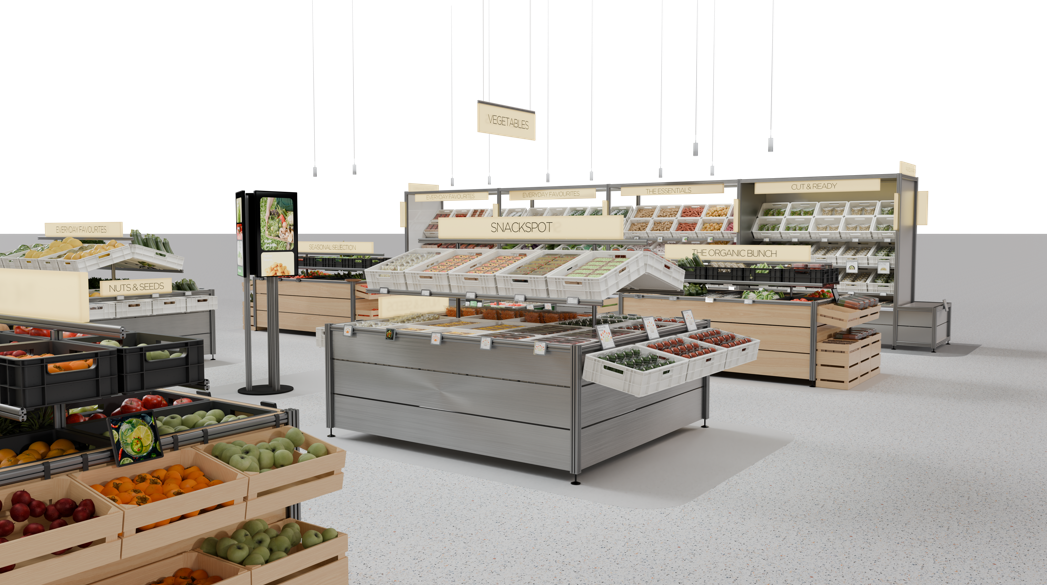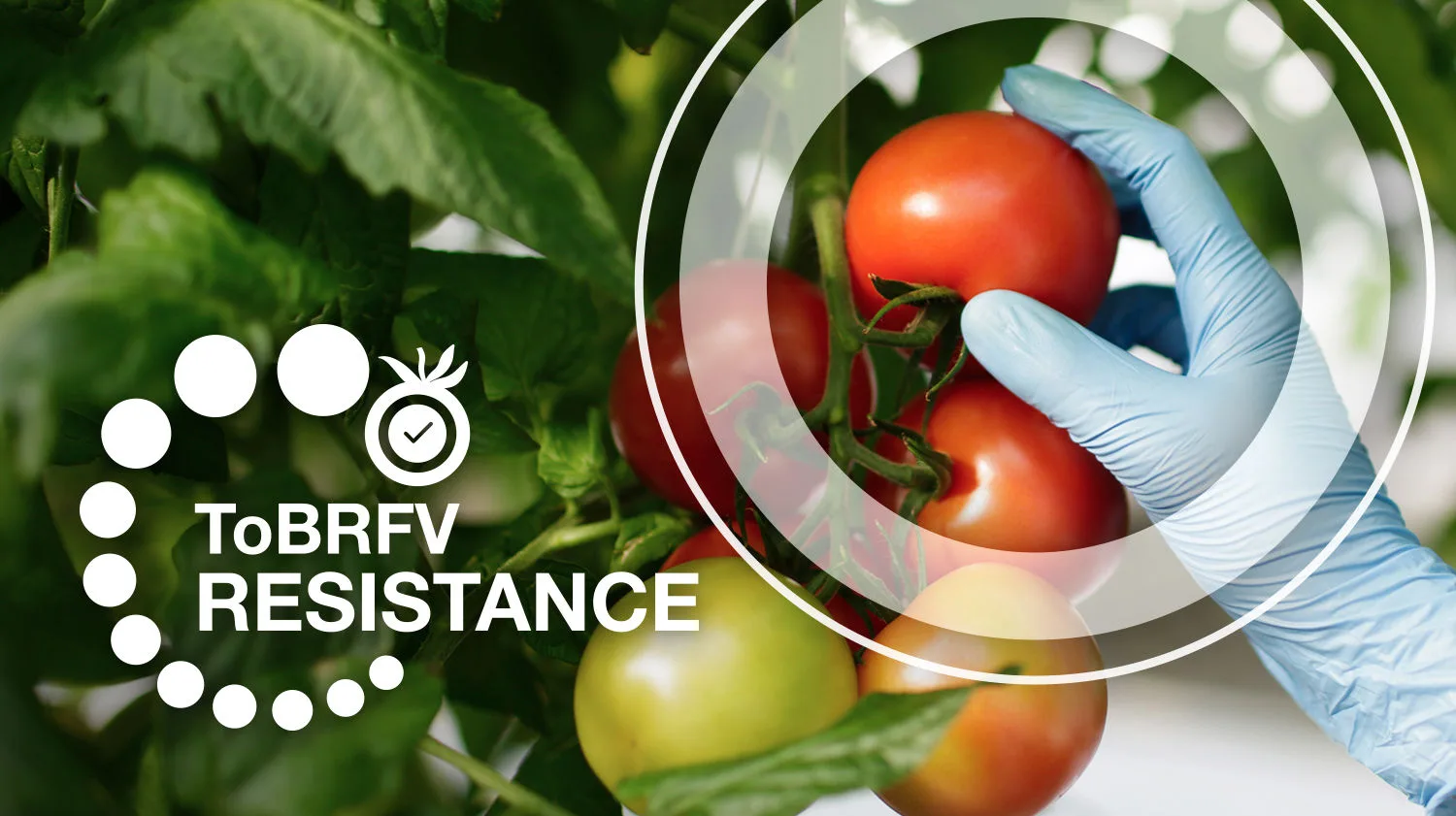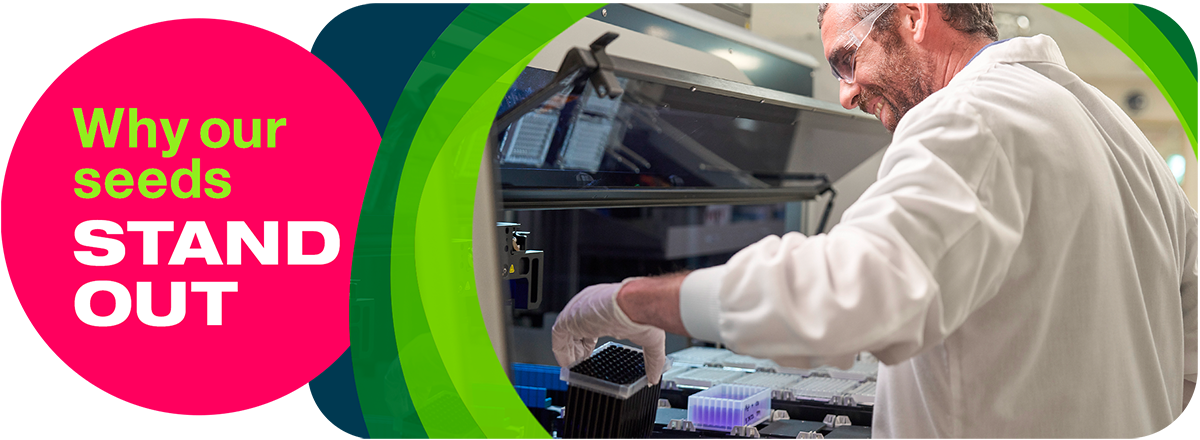Seed processing – the path to uniformity and high yield potential
Seed processing could include the receiving, drying, cleaning, and sanitation of seed. Seeds are then sorted to help ensure that only the best, uniform seeds make the cut. Then, the seeds are tested further for diseases and irregularities. This attention to detail and consistent testing helps decrease variability and improve uniformity, increasing yield potential and harvesting efficiency.



Seed processing also includes treatments and enhancements. They vary by crop, grower, and market needs and allow us to provide a customized seed supply.

Seed enhancements – improving the seed-growing experience
Seed enhancements are seed coatings or seed priming procedures that help improve the handling and planting of seed, reduce the time to germination, or increase the uniformity of seedling emergence.
Seed priming
Seed priming enhances the speed and uniformity of germination by adding water to the seed for a predetermined time and temperature. The preparation starts the germination process, but the process is stopped before the seed sprouts (no root or shoot). After preparation, the seeds are dried back to normal moisture until needed. The resulting seed will germinate faster and more uniformly than non-primed (raw) seed. The seed will also germinate well over a wider range of temperatures since many of the most temperature-sensitive pathways have been completed during priming.

Potential primed seed benefits
- Faster & more uniform emergence and (trans)plants
- Increased tolerance to stressed growing conditions
- Tolerance to wide range of temperatures
- Increased yield potential and harvesting efficiency



Peter Groot, Operations Specialist, Vegetables by Bayer, explains the seed priming process.
Seed coatings
If a seed is small and irregularly shaped, it can be difficult to plant mechanically. Applying seed coatings may improve handling and planting by making the seed more uniform and spherical.
There are three basic types of seed coatings (Figure 1).
Filmcoats are very thin and do not change the seed’s shape, size, or weight, and they can help reduce water loss.1 Encrustments are somewhat thicker, making the seed more uniform in shape, more spherical, and slightly heavier. Encrusted seed is easier to plant than non-coated seed when using a vacuum seeder. Pelleted seeds have the thickest coatings, are more uniform in size and shape, and are heavier. Pelleted seeds are easier to handle and plant in operations using belt- or vacuum-seeders.
1 Taylor, A. G., Hoepting, C. A., Nault, B. A., Lorbeer, J. W., and. McDonald, M. R. 2008. Onion seed treatment and coating technologies. Acta Hortic. 782, 129-134.




Figure 1. Onion seed with various seed coatings

Seed treatments – preventing problems before they start
We’re committed to giving seeds and seedlings the best opportunity to thrive. Seed treatments (applications of insecticides and/or fungicides) help protect seeds and young seedlings from insect pests and seed-borne/soilborne pathogens. They help control diseases and limit damage from below-ground pests.
Preventing problems before they start helps reduce the risk of replanting a crop. Seed treatments have the potential to effectively and efficiently combat the growth of pest and disease populations and reduce the need for growers to resort to additional foliar spray applications.
Potential seed treatment benefits
- Protect seeds and young seedlings from insect pests and pathogens
- Provide savings on labor costs, pesticides, and fuel needed for spraying
- Offer an efficient and sustainable way to help crops thrive and reach their full yield potential
Source: The benefits of seed treatment





